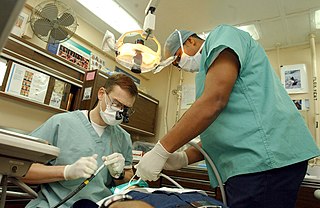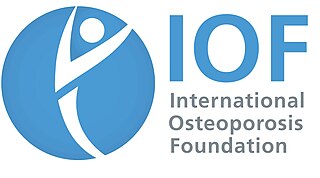
Medicine is the science and practice of caring for patients, managing the diagnosis, prognosis, prevention, treatment, palliation of their injury or disease, and promoting their health. Medicine encompasses a variety of health care practices evolved to maintain and restore health by the prevention and treatment of illness. Contemporary medicine applies biomedical sciences, biomedical research, genetics, and medical technology to diagnose, treat, and prevent injury and disease, typically through pharmaceuticals or surgery, but also through therapies as diverse as psychotherapy, external splints and traction, medical devices, biologics, and ionizing radiation, amongst others.

Pathology is the study of disease. The word pathology also refers to the study of disease in general, incorporating a wide range of biology research fields and medical practices. However, when used in the context of modern medical treatment, the term is often used in a narrower fashion to refer to processes and tests that fall within the contemporary medical field of "general pathology", an area that includes a number of distinct but inter-related medical specialties that diagnose disease, mostly through analysis of tissue and human cell samples. Idiomatically, "a pathology" may also refer to the predicted or actual progression of particular diseases. The suffix pathy is sometimes used to indicate a state of disease in cases of both physical ailment and psychological conditions. A physician practicing pathology is called a pathologist.

Epidemiology is the study and analysis of the distribution, patterns and determinants of health and disease conditions in a defined population, and application of this knowledge to prevent diseases.

A dentist, also known as a dental surgeon, is a health care professional who specializes in dentistry, the branch of medicine focused on the teeth, gums, and mouth. The dentist's supporting team aids in providing oral health services. The dental team includes dental assistants, dental hygienists, dental technicians, and sometimes dental therapists.

In epidemiology, an outbreak is a sudden increase in occurrences of a disease when cases are in excess of normal expectancy for the location or season. It may affect a small and localized group or impact upon thousands of people across an entire continent. The number of cases varies according to the disease-causing agent, and the size and type of previous and existing exposure to the agent. Outbreaks include many epidemics, which term is normally only for infectious diseases, as well as diseases with an environmental origin, such as a water or foodborne disease. They may affect a region in a country or a group of countries. Pandemics are near-global disease outbreaks when multiple and various countries around the Earth are soon infected.

Health informatics combines communications, information technology (IT), and health care to enhance patient care and is at the forefront of the medical technological revolution. It can be viewed as a branch of engineering and applied science.

Pressure ulcers, also known as pressure sores, bed sores or pressure injuries, are localised damage to the skin and/or underlying tissue that usually occur over a bony prominence as a result of usually long-term pressure, or pressure in combination with shear or friction. The most common sites are the skin overlying the sacrum, coccyx, heels, and hips, though other sites can be affected, such as the elbows, knees, ankles, back of shoulders, or the back of the cranium.
The International Classification of Functioning, Disability and Health (ICF) is a classification of the health components of functioning and disability.
Periodontology or periodontics is the specialty of dentistry that studies supporting structures of teeth, as well as diseases and conditions that affect them. The supporting tissues are known as the periodontium, which includes the gingiva (gums), alveolar bone, cementum, and the periodontal ligament. A periodontist is a dentist that specializes in the prevention, diagnosis and treatment of periodontal disease and in the placement of dental implants.
An oral medicine or stomatology doctor/dentist has received additional specialized training and experience in the diagnosis and management of oral mucosal abnormalities including oral cancer, salivary gland disorders, temporomandibular disorders and facial pain, taste and smell disorders; and recognition of the oral manifestations of systemic and infectious diseases. It lies at the interface between medicine and dentistry. An oral medicine doctor is trained to diagnose and manage patients with disorders of the orofacial region.
Neighbourhood Watch in the United Kingdom is the largest voluntary crime prevention movement covering England and Wales with upwards of 2.3 million household members. The charity brings neighbours together to create strong, friendly and active communities in which crime can be tackled. Neighbourhood Watch Network is the umbrella organisation supported by the Home Office to support Neighbourhood Watch groups and individuals across England and Wales.

Speech–language pathology is a healthcare and academic discipline concerning the evaluation, treatment, and prevention of communication disorders, including expressive and mixed receptive-expressive language disorders, voice disorders, speech sound disorders, speech disfluency, pragmatic language impairments, and social communication difficulties, as well as swallowing disorders across the lifespan. It is an allied health profession regulated by professional bodies including the American Speech-Language-Hearing Association (ASHA) and Speech Pathology Australia. The field of speech-language pathology is practiced by a clinician known as a speech-language pathologist (SLP) or a speech and language therapist (SLT). SLPs also play an important role in the screening, diagnosis, and treatment of autism spectrum disorder (ASD), often in collaboration with pediatricians and psychologists.
The Textbook of Military Medicine (TMM) is a series of volumes on military medicine published since 1989 by the Borden Institute, of the Office of The Surgeon General, of the United States Department of the Army. It constitutes a comprehensive, multi-volume treatise on the art and science of military medicine, as practiced by the United States armed forces. The books integrate lessons learned in past wars with current principles and practices of military medical doctrine.
The following outline is provided as an overview of and topical guide to medicine:

The International Osteoporosis Foundation (IOF), headquartered in Nyon, Switzerland, is a non-governmental organization (NGO) founded in 1998. It was formed from the merger of the European Foundation for Osteoporosis, founded in 1987, and the International Federation of Societies on Skeletal Diseases. The foundation functions as a global alliance of individuals and organizations concerned with the prevention, diagnosis and treatment of osteoporosis and musculoskeletal bone disease. The goal of the Foundation is to increase the early detection of osteoporosis and related musculoskeletal diseases, as well as to improve the treatment of these conditions through international collaboration among national healthcare systems and governments. The Foundation is the largest global NGO dedicated to osteoporosis and musculoskeletal diseases.
The European Health Management Association (EHMA) was established in 1982 and is a non-profit membership organisation. Its focus is on health management capacity and capabilities and on supporting the implementation of health policy and practice.
Wound bed preparation (WBP) is a systematic approach to wound management by identifying and removing barriers to healing. The concept was originally developed in plastic surgery. It includes wound assessment, debridement, moisture balance, bacterial balance, and wound cleaning.
The following outline is provided as an overview of and topical guide to applied science:
The International Society of Travel Medicine (ISTM) is an international society of physicians, pharmacists, nurses, and other medical professionals based in Dunwoody, United States to promote travel health initiatives. Founded as an organization in 1991, ISTM has built a global network that is committed to the advancement of travel medicine - currently the largest organization of this type. The ISTM fosters research, facilitates the rapid exchange of information, and provides educational programming to serve the travel medicine community. Promoting the development and evaluation of safe, effective, preventive and curative interventions for patients prior to travel, during travel and post travel is an important aspect of supporting the travel medicine community.
In its succinct definition, healthcare engineering is "engineering involved in all aspects of healthcare". The term engineering in this definition covers all engineering disciplines such as biomedical, chemical, civil, computer, electrical, environmental, hospital architecture, industrial, information, materials, mechanical, software, and systems engineering.








